(Strand)om Stories: Wolverine: Weapon X Unbound Review
This confusion-causing collection contains tales which retroactively scoff at history while providing some decent characterization
—by Nathan on August 8, 2025—
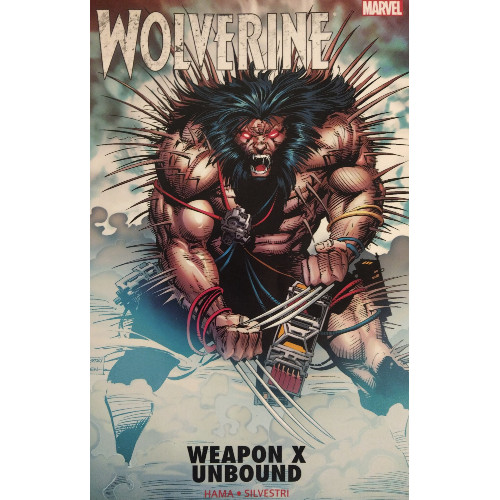
In the Spider-Man/Punisher/Sabretooth: Designer Genes graphic novel I recently reviewed, writer Terry Kavanagh constructed a scene where the murderous Sabretooth underwent a series of memories, flashing like lightning through his brain, of him, his feared foe Wolverine, and another individual being experimented upon. An editor's note told the reader to check out Wolverine #50 if they wanted to know what the heck was going on with all that.
"Hey, I have Wolverine #50," I realized upon reading that editor's note, and wanting to know what the heck was going on with all that, I quickly flipped through a series of trades to find the collection I'm reviewing today: a slice of stories from Larry Hama's time on Wolverine intended, in part, to serve as a sequel to the acclaimed epic known as "Weapon X."
Written and illustrated by Barry Windsor-Smith, "Weapon X" is one of my favorite Wolverine comics. It tells a brutal story, of how the man called Logan is unmade and remade at the behest of several inhumane scientists working for the project which shares the narrative's title. This is where Wolverine receives his adamantium skeleton which makes him durable and also gives his snikt-snikts their chrome sheen and trademark snikt-snikt-ness. In a totally different story, Wolverine: Origin, writer Paul Jenkins postulated that Wolverine's healing factor also extended to his memories, "healing over" dark or depressing visions of the past which have haunted him.
Which I guess retroactively explains why, for a time, Wolverine forgot the whole "tortured at the hands of selfish scientists and having unbreakable metal fused to his skeleton" bit.
Until Larry Hama came along.
Wolverine: Weapon X Unbound
Writers: Larry Hama and Fabian Nicieza
Pencilers: Gerald DeCaire, Marc Silvestri, Andy Kubert, and Darick Robertson
Inkers: Don Hudson, Dan Green, Hillary Barta, Tom Palmer, Klaus Janson, Al Milgrom, and Josef Rubinstein
Colorists: Glynis Oliver, Steve Beccellato, Kelly Corvese, Joe Rosas, Kevin Tinsley, and Marie Javins
Letterers: Pat Brossaeu and Michael Heisler
Issues Collected: Wolverine #47-57
Volume Publication Date: January 2017
Issue Publication Dates: October 1991-July 1992

In conjunction with this review, I also penned an analysis of a different story Hama wrote starring another clawed Canadian mutant, that nasty Sabretooth fella. I ragged on that tale a little bit, critiquing the constant fast-paced action sequences in place of strong character moments. To his credit, Hama provides a blend of both strong characterization and fun action sequences throughout this volume, though it does help that this collection contains eleven issues instead of four.
I'll discuss the characterization in a bit, but lemme get an adamantium-esque weight off my chest first: I dislike the "false memory" plot Hama creates. The whole thing, as Hama crafts it, is that as Wolverine begins recalling his past, he learns that some of what he remembers may have been implanted in his noggin by Weapon X. And not just him, but other experiments such as Sabretooth and Wolverine's former fling Silver Fox received implanted memories as well. This does lead to interesting sequences where Wolverine, in search of his enigmatic past, begins "recalling" a skirmish he and Sabretooth had with enemy agents and a brutal fight between himself and Sabretooth after the latter murdered a love interest that may never have happened but were just planted Inception-style into Wolverine's cranium.
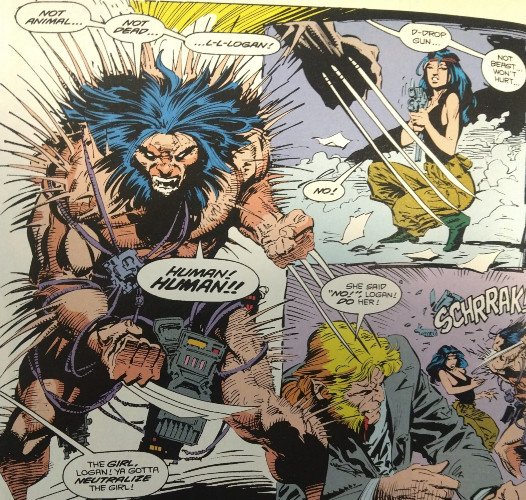
Throughout these first issues, I'll admit, Hama does nicely tease the twist, pulling the rug fiber by fiber out from under the reader–he's not interested in yanking you off your feet with a sudden, startling reveal; he's more invested in having you realize the rug is gone. The magic trick–that some of these memories of Logan's may not be real–is meant to create tension over time. The truth is supposed to dawn on the reader about the same time it dawns on Logan, after you've both already watched the sun creep a little over the horizon. What you've been reading the last few issues is meant to come together in a way which makes sense. You know you've been watching the sun rise; you just didn't know when it would fully appear, when dawn would become day.
In other words, when Logan comes to grips with the truth about these false memories, you're supposed to be left with the accumulated emotional weight which comes with them…and, simultaneously, overjoyed with the mutant when he realizes which memories are true. The problem, as I see it, is the "false memories" bit is a bizarre layer to add to the man's fragmented past. Why not just have Logan come to fully understand his missing past as legitimate? Why shroud this all in secrecy? Scenes where Logan walks through movie sets constructed to represent scenes for these false memories just wound up confusing me more than providing any clarity.
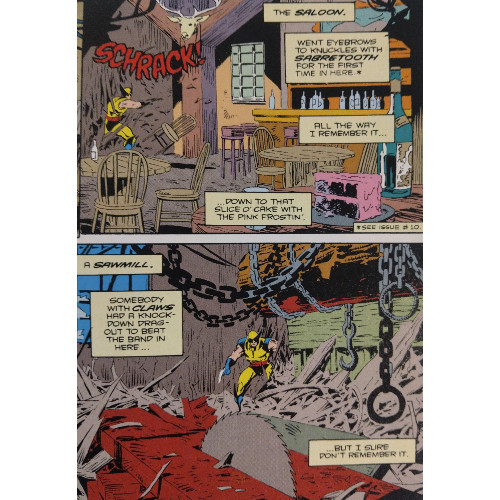
Maybe I haven't read enough Wolverine comics from this era to fully appreciate what the heck is going on, or maybe I need to give this volume a re-read someday, but I don't quite see the purpose, at least narratively, in planting false memories in the head of a character who routinely forgets his past. Yes, I understand Hama is adding a layer of tension, toying with the possibility of Logan's personality when he realizes aspects of life he's tried so hard to remember are just pieces of a lie. That'd be an incredibly difficult truth to swallow, and Hama does have Logan react appropriately when he realizes certain memories are false. But it feels to me Hama is reaching for that game-changing revelation which is meant to change Wolverine's life forever! An "everything you know is a lie" style of twist. It's too far a stretch, too silly an idea, for me to accept as reasonable and palatable. I'm sure other, way more die-hard Wolverine fans would argue the merits of the idea to me, but I feel Hama has muddied the waters. Thanks to this tale, odd changes to the past are now true: an early issue of Chris Claremont's Wolverine run featuring a famous Wolverine/Sabretooth conflict? Constructed on a false premise. Windsor-Smith's "Weapon X"? An absolute classic on its own, but now with an additional wrinkle.
Where Hamma endeavors to redeem this concept is in Wolverine's response–now knowing the extent to which he has been toyed with, which includes the factual, brutal, dehumanizing torture he experienced at the hands of Weapon X, Logan undergoes a dramatic change in personality as he struggles to reclaim the humanity he feels has been stolen from him. He asserts his human side, convinces himself he isn't an animal or a plaything for people to corrupt, push, and prod. Hama crafts good conflict from this, both internal and external, and as Wolverine vents his rage against government agencies, cyborg supervillains, and martial arts masters, he tempers his inner fires. Warned by Professor X that deeper dives into the mysteries of his past may resort in permanent damage to his psyche and a loss of his sanity, Wolverine nevertheless stays the course, his own determination to cling to his humanity suppressing bouts of animalistic tempers years of experimentation and conditioning have planted within him.
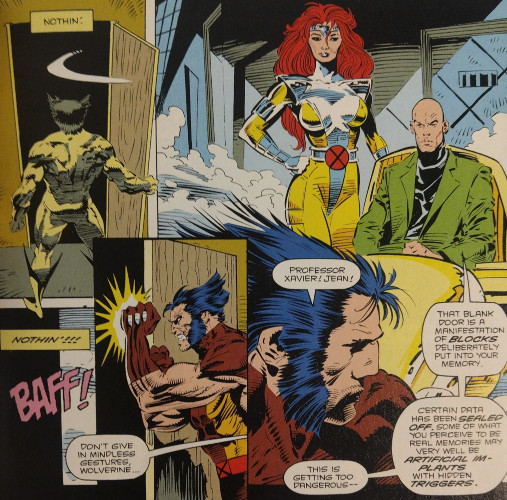
When Hama isn't toying with Wolverine's past and mental health, he uses the rest of the volume to develop some engaging scenes, action sequences, and other interesting plot pieces. Outside of the "false memories" bit, we get such fun moments as "Wolverine fights Mojo and Spiral at the end of the universe and rides a rocket," "Wolverine battles ninjas in Japan after bailing Jubilee out from prison," and "Wolverine breaks into the SHIELD Helicarrier while riding a motorcycle." It's a mishmash of other stories which don't really mesh with the larger "false memories" plot, which is fine by me. It's much more entertaining watching Cyberforce co-creator Mark Silvestri set the clawed Canadian against a horde of ninjas or villains from the future.
I should also commend Hama for how well he wraps the volume up. Unlike the "false memories" plot, which unkindly twists history, Hama's final story decently refers back to the Claremont/Cockrum/Byrne X-Men era of the late 70s/early 80s. A recognizable character returns and is given a surprisingly fitting conclusion to their own narrative, placing Wolverine in a devastating emotional position. It's a good send-off for an important supporting cast member, done in a way which feels respectful to the character and their history while maintaining an element of shock, marking a solid final story to end the volume, particularly for longtime fans of Wolverine. We don't really get a resolution for our clawed Canadian himself (maybe that happened in a later issue?), but it's an appropriately gritty note for the final pages.
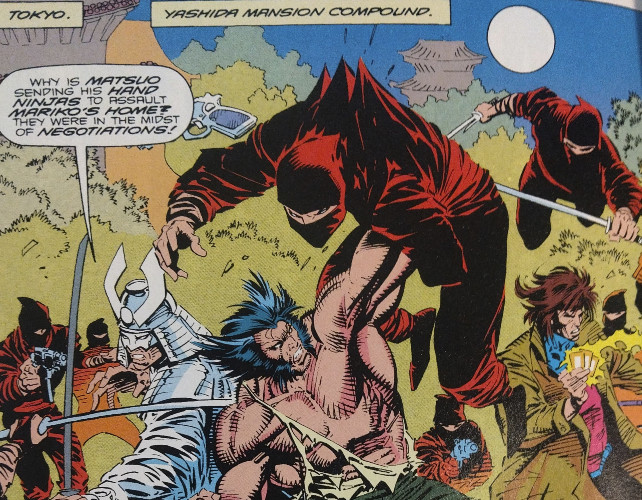
"History" feels like a proper theme for this volume, as so much of the material is reflective, in one way or another, on where Wolverine has come from and how he has reached this present moment. Even a scene where shapeshifter Mystique temporarily assumes the form of Jean Gray to mess with Wolverine is a nod to the hero's past, back when he and Scott Summers jealousy pursued the same woman. As homages go, Hama's work falls somewhere between ridiculous and decent. The whole "'Weapon X' sequel" arc feels like a misfire–though it is touted as a sequel, the narrative is a surface-level acknowledgement of Barry Windsor-Smith's beloved deconstruction of Logan, not so much a continuation as it is a warping of the past.
Hama does the same to an early Chris Claremont narrative, though he's more respectful to the past as the volume closes. Yeah, we get some moments that hit that "cool" factor–who wouldn't watch Wolverine fly through the front window of a Helicarrier with a motorcycle to confront Nick Fury and not call it awesome???–but these are lost beneath the silliness Hama injects into his plotting. It's not meant to be silly, it's meant to be impactful, yet much of that intention is lost on me. You'll have to plant some false memories into my own head to make me believe Hama creates a successful "sequel" that properly celebrates my favorite Wolverine story of all time.